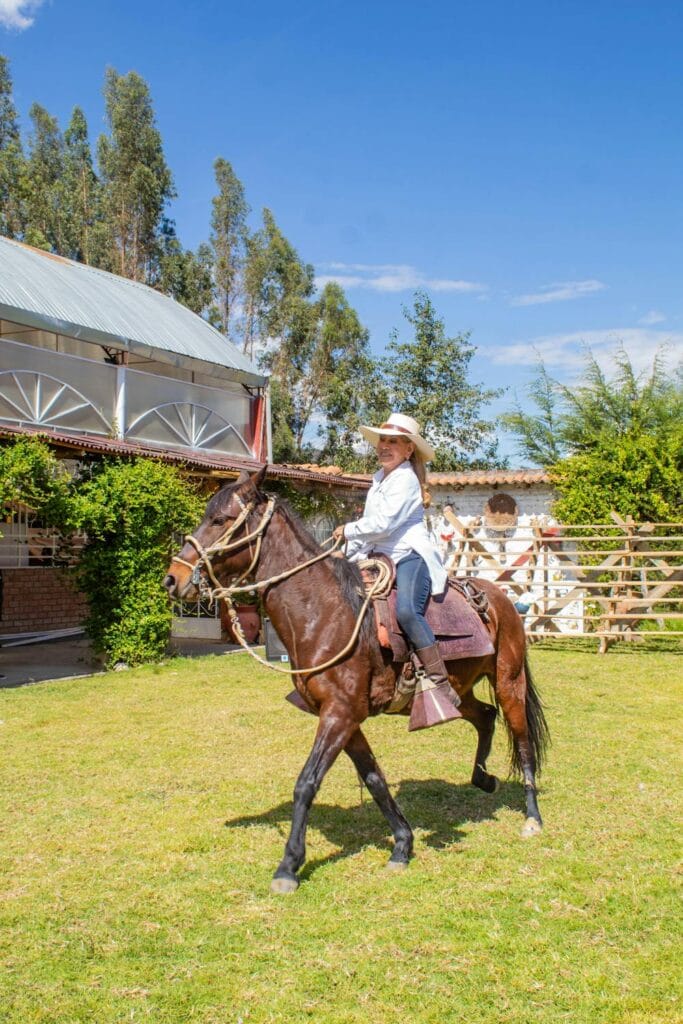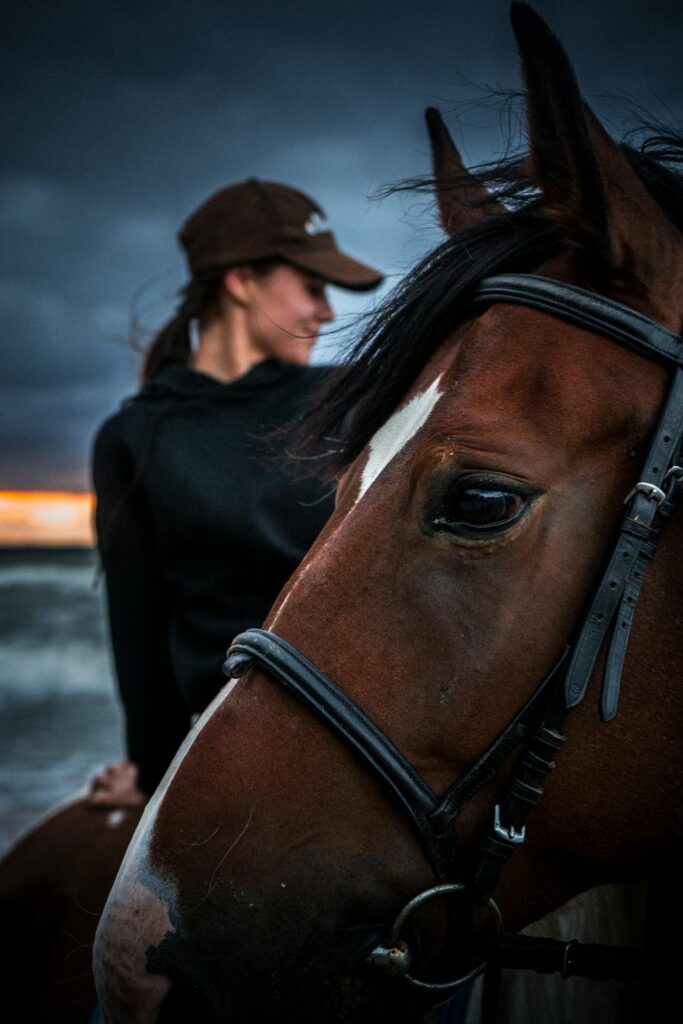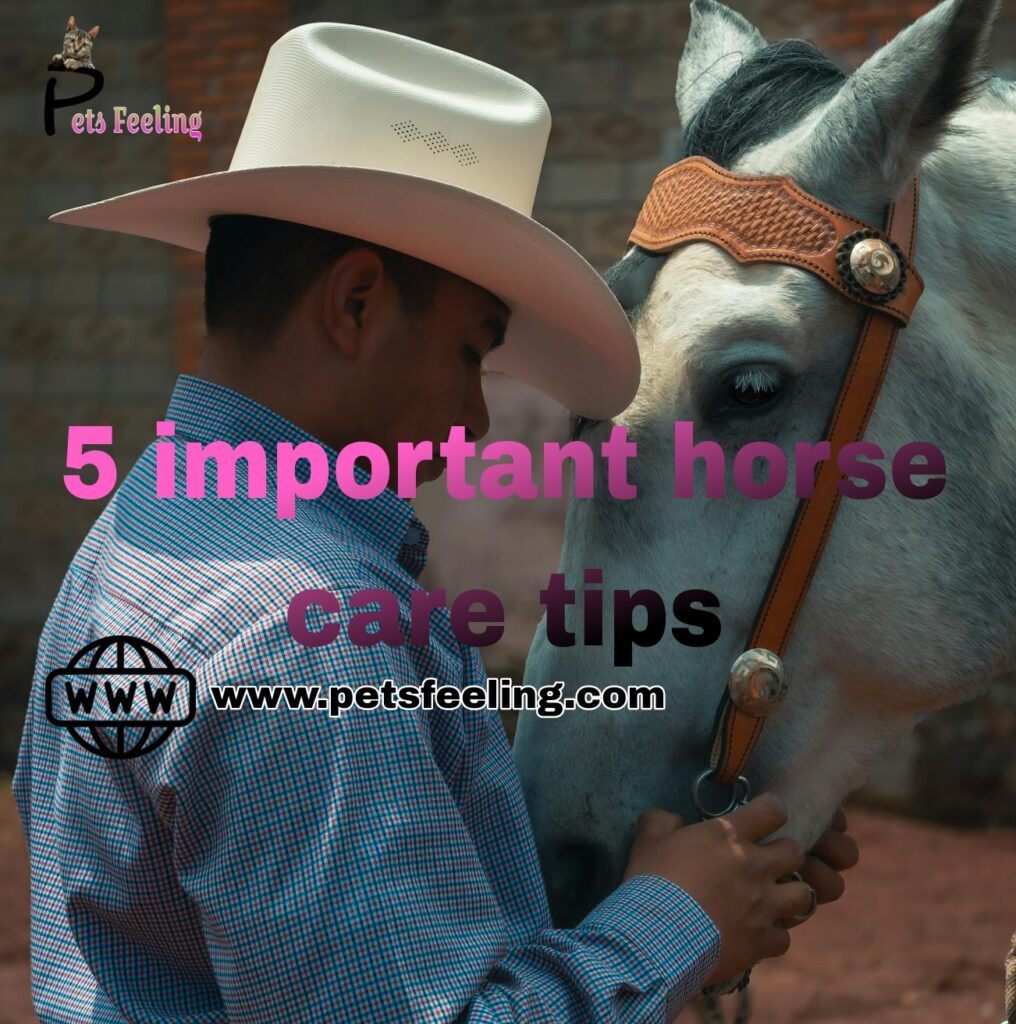5 important horse care tips
Owning a horse is a rewarding experience. It comes with a big responsibility to ensure our equine friends get the best care. As horse lovers, we know how crucial it is to give our horses the attention and care they need. In this article, we’ll share five key tips for horse care. These tips will help you keep your horse healthy, happy, and well. (horse care)
Key Takeaways
- Establish a consistent grooming routine to maintain a healthy coat and skin
- Prioritise proper hoof care and regular farrier visits for optimal hoof health
- Develop a balanced feeding plan to meet your horse’s nutritional needs
- Create a clean, comfortable, and secure stable environment for your horse
- Understand your horse’s behaviour and recognise stress signals to ensure their well-being

Grooming Routines for a Healthy Coat
Keeping your horse’s coat in top shape is key for their health. Regular grooming not only makes their skin and fur look great. It also spots any health problems early. We’ll look at the main parts of grooming that keep a horse’s coat shiny and healthy.
Brushing Techniques
Choosing the right brushes and brushing methods is vital. Start with a curry comb to get rid of dirt. Then, use a dandy brush to remove hair and dirt. Finish with a soft body brush to make the coat shine. (horse care)
- Use a curry comb in a circular motion to dislodge dirt and stimulate the skin
- Employ a dandy brush in the direction of the hair growth to lift away loose hair and impurities
- Finish with a body brush, gently sweeping in the direction of the coat to enhance shine and distribute natural oils
Mane and Tail Care
The mane and tail are a horse’s crowning glory. They need special care to stay shiny and untangled. Brush them regularly with a sturdy brush, being gentle with knots. A special conditioner can also keep them looking great.
| Grooming Tool | Purpose |
| Curry Comb | Loosens dirt and debris, stimulates the skin |
| Dandy Brush | Removes excess hair and surface grime |
| Body Brush | Smooths the coat and distributes natural oils |
| Mane and Tail Brush | Maintains the lustre and condition of the mane and tail |
By adding these grooming steps to your routine, your horse’s coat will stay healthy and shiny. This lets their natural beauty show.

Hoof Care and Horseshoeing
Looking after our horses’ hooves is key to their health. Regular trimming and shoeing by a skilled farrier is crucial. It keeps our horses comfortable, sound, and performing well.
The horseshoeing process is all about checking and shaping the hooves. A good farrier will look closely at the hooves. They’ll spot any problems and plan how to keep the hooves balanced and strong.
Some common hoof issues that need a farrier’s help include:
- Overgrowth or uneven wear
- Cracks, splits, or other structural defects
- Injuries or infections, such as abscesses
- Lameness or decreased mobility
Fixing these problems early on helps avoid bigger issues. It keeps our horses healthy and happy.
Regular hoof care and horseshoeing are important for our horses’ health. They also help our horses perform better in different equestrian equipment and activities. Taking care of our horses’ hooves is a big part of looking after their horse tack and equestrian equipment.
| Hoof Care Frequency | Benefits |
| Every 4-8 weeks | Maintains balanced hoof shapePromotes healthy hoof growthPrevents hoof-related issuesEnsures optimal horse comfort and performance |
Balanced Equine Nutrition
It’s vital to give our horses a balanced diet for their health and performance. Knowing what they need is key to their well-being.
Forage Requirements
Hay and pasture should be the base of their diet. These foods are rich in fibre, meeting their energy needs and aiding digestion. It’s essential to provide high-quality forage for their health. (horse care)
Supplement Considerations
Supplements can also be important, alongside forage. They help meet specific nutritional needs and support health. A well-chosen supplement plan can enhance performance and longevity.
| Nutrient | Benefits | Good Sources |
| Protein | Muscle development and repair | Hay, pasture, equine supplements |
| Carbohydrates | Energy production | Hay, grains, equine supplements |
| Vitamins | Immune function, skin and hoof health | Pasture, hay, equine supplements |
| Minerals | Bone development, muscle function | Pasture, hay, equine supplements |
Understanding forage and supplements helps us create a detailed equine nutrition plan. This plan meets our horses’ unique needs, supporting their horse health and equine health for life.
Stable Management and Horse Care
Keeping our stables clean and safe is key for our horses’ health. A clean, well-ventilated space helps our horses stay happy and healthy. We’ll look at stable management and why regular vet visits and health checks are important. (horse care)
Creating a Healthy Stable Environment
A good stable is more than just a place to sleep. It must be clean and well-ventilated. This keeps our horses healthy by controlling temperature and air quality. (horse care)
Pasture Management Strategies
Our horses also need a healthy pasture. Rotating grazing and keeping the grass balanced are important. This stops weeds and parasites, making the pasture better for our horses.
Veterinary Care and Preventive Healthcare
Regular vet visits are essential for horse care. They help catch health issues early and keep our horses up to date on vaccinations. Preventive care like deworming and dental checks also keeps our horses healthy. (horse care)
| Stable Management Essentials | Pasture Management Checklist |
| Daily stall cleaning and bedding maintenanceEnsuring adequate ventilation and air circulationProper storage and management of feed and supplementsMaintaining a clean and organised tack room | Implement rotational grazing schedulesMonitor and control weed growthMaintain a balanced grass-to-weed ratioRegularly test and amend soil pH and nutrient levels |
By focusing on stable management, pasture care, and health checks, we can make a better life for our horses. This approach ensures our horses are happy and healthy under our care.
Understanding Horse Behaviour
It’s vital to understand horse behaviour to build a strong bond with them. This knowledge ensures their wellbeing. By reading their cues and body language, we can give them the care they need. (horse care)
Recognising Stress Signals
Horses show their feelings through their behaviour. Spotting stress signals is key to understanding them. Here are some common signs:
- Rapid breathing or flaring nostrils
- Tense or rigid body posture
- Ears pinned back or laid flat against the head
- Tail swishing or wringing
- Whites of the eyes showing
- Pacing or restless movements
By noticing these signs, we can help our horses when they’re stressed. This keeps them healthy and strengthens our bond.
Getting to know each horse’s personality and habits is a journey. But it’s worth it. By paying attention and responding to them, we build a happy and rewarding relationship. (horse care)
The keywords “horse behaviour”, “equine behaviour”, “horse training”, “horse riding”, “equestrian activities”, “horse health”, and “equine health” have been interwoven throughout the text to enhance its SEO relevance.
Conclusion
Following the five key horse care tips in this article helps keep our horses healthy and happy. These tips include regular grooming, a balanced diet, and understanding their behaviour. Each horse is different, so we must tailor these tips to meet their specific needs.
With the right knowledge and commitment, we can develop strong bonds with our horses. This is crucial for their well-being and our enjoyment of equestrian activities. (horse care)
Proper care is essential for our horses’ health. It includes horse care, equine nutrition, horse health, hoof care, and stable management. Mastering horse grooming, understanding equine behaviour, and addressing their horse training and horse riding needs is vital. (horse care)
Using the right equine supplements, horse breeding, and horseback riding practices also boosts their health and performance.
By fully committing to our horses’ care, we can create a wonderful experience for both us and them. This includes horse transportation, equine grooming, horse nutrition, and providing the right equestrian equipment, pasture maintenance, and horse boarding facilities.

FAQ
What are the essential steps in a thorough grooming routine for my horse?
Grooming your horse is key to keeping their coat, skin, and health in top shape. Start with a curry comb to remove dirt and debris. Then, use a dandy brush to get rid of the dirt you loosened.
Next, smooth their coat with a body brush to remove any dirt left. Don’t forget the mane and tail. Brush them gently to keep them healthy and free from tangles.
How often should I have my horse’s hooves trimmed and shoed?
Hoof care is vital for your horse’s comfort and health. We suggest trimming and shoeing every 4-8 weeks. This keeps their hooves aligned, supported, and protected.
What are the key considerations in providing a balanced equine diet?
A balanced diet is crucial for your horse’s health and performance. Start with high-quality forage like hay and pasture. These provide the fibre and energy they need.
You might also need to add concentrates and supplements. This is to meet any specific nutritional needs or gaps in their diet.
How can I create a safe and comfortable stable environment for my horse?
A clean and well-ventilated stall is essential for your horse’s wellbeing. Make sure it has good bedding for comfort and cushioning.
Keep a regular schedule for cleaning stalls and water buckets. This helps keep the stable healthy and clean. Always check the stable for hazards to keep your horse safe.
How can I better understand and address my horse’s behavioural needs?
Understanding your horse’s behaviour is key to a strong bond and their wellbeing. Watch their body language and cues closely. This helps you spot any signs of stress or discomfort.
By recognising and addressing these signs, you can give your horse the care they need. This strengthens your relationship with them.
IMPORTANT ADDITIONS
Edited on , SEPTEMBER 26,2024
read more articles : https://petsfeeling.com/blog-2/
social media :
facebook : https://www.facebook.com/PetsFeeling0/
tiktok : https://www.tiktok.com/@pets.feeling
instagram : https://www.instagram.com/pets._.feeling/
youtube : https://www.youtube.com/@Pets-Feeling

